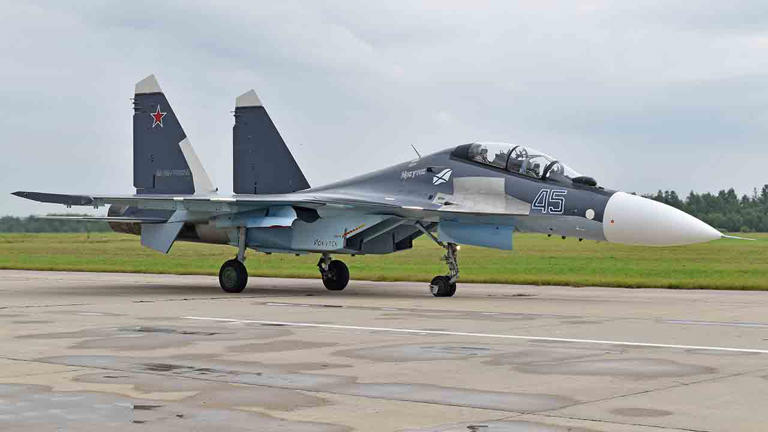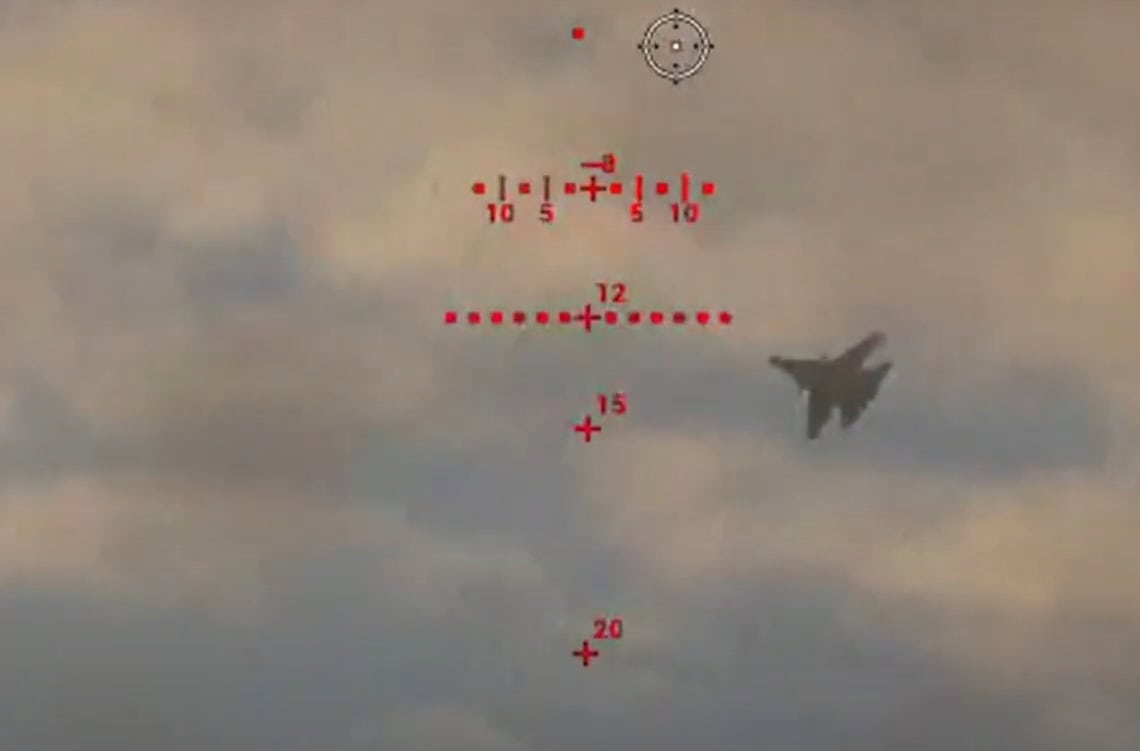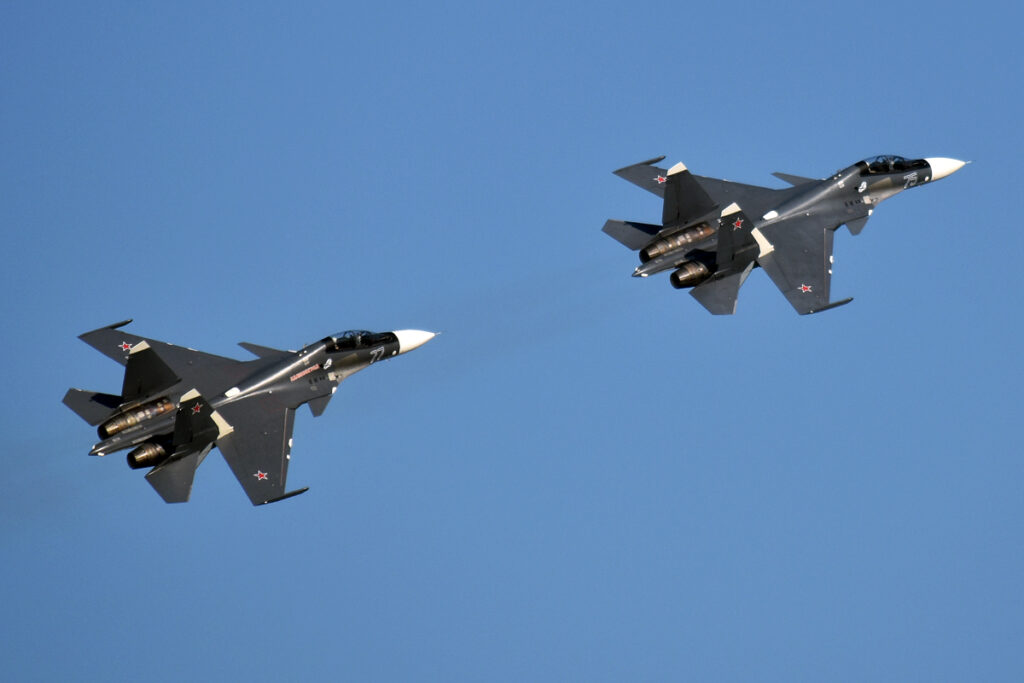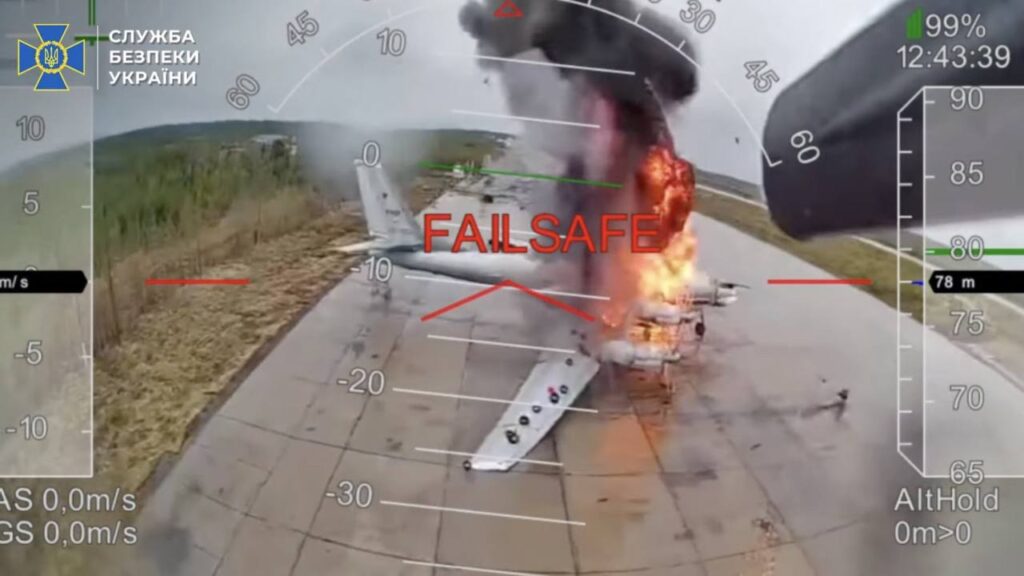Militarnyi: Russian Black Sea Fleet’s 43rd Air Regiment loses over half its Su-30SM fighters since 2022

Ukraine’s campaign to erode Russian air power in the Black Sea region has taken a heavy toll on the 43rd Naval Assault Aviation Regiment of the Russian Black Sea Fleet, Militarnyi reports. The regiment, stationed at the occupied Saky airfield in Crimea, began 2022 with a full squadron of 12 Su-30SM multirole fighters. In the three years since the full-scale invasion began, seven of those aircraft have been destroyed in confirmed incidents, with two more damaged. The unit’s fleet has been reduced to less than half its original strength.
Since the start of Russia’s full-scale invasion in February 2022, Ukraine has been targeting Russian military aviation with all available means, including cruise missiles, man-portable air-defense systems, other anti-air weapons, sabotage, and long-range drones. The Russian-occupied Crimean Peninsula often becomes a target for long-range attacks, where the Ukrainian hit Russian air defense assets, Navy ships, and other military installations and equipment.
From full squadron to crippled force
According to Militarnyi, the 43rd regiment’s first confirmed Su-30SM loss occurred on 5 March 2022 over Mykolaiv Oblast. Both crew members ejected and were taken prisoner. One of them, Major Oleksii Holovenskyi, was the squadron commander at the time. The other, Captain Aleksei Kozlov, served as the aircraft’s navigator. This loss marked the beginning of a series of blows to the unit.
Just months later, on 9 August 2022, Ukrainian Security and Defense Forces struck the Saky airfield, which had been captured by Russia after 2014 and became home to the regiment under military unit number 59882. The attack destroyed three Su-30SMs outright and damaged another. The same strike also destroyed five Su-24 bombers and damaged three more, inflicting serious damage on the regiment’s overall combat capabilities.
Shoot-downs and unprecedented tactics
The Russian regiment’s losses continued into 2024. On 11 September, Militarnyi reports, Russian forces lost contact with a Su-30SM around 5 a.m. The Ukrainian Main Intelligence Directorate (HUR) later confirmed that a special operations unit had downed the aircraft using a man-portable air-defense system.
In 2025, Ukraine introduced new tactics that marked a milestone in aerial warfare. On 2 May, working jointly with the Security Service of Ukraine and other defense forces, HUR targeted another Su-30SM in the Black Sea. The aircraft was destroyed by an AIM-9 missile launched from a maritime drone — the first recorded instance in history of a manned aircraft being shot down by such a platform.
The latest confirmed crash near Zmiinyi (Snake) Island
The most recent confirmed loss was reported by the Ukrainian Navy yesterday, on 14 August 2025. According to the Navy, its intelligence service intercepted Russian radio communications revealing the sudden loss of contact with a Su-30SM southeast of Zmiinyi (Snake) Island in the Black Sea. Defense Express reports that the aircraft crashed under still-unclear circumstances while on a combat mission.

Debris found after Russian Su-30 crash near Ukraine’s Snake Island in Black Sea, Navy says
Intercepted communications indicated that Russian forces launched a search-and-rescue operation in the area. Ukrainian Navy statements said wreckage had been spotted floating on the sea surface, but there was no confirmed information on the fate of the pilots. Russian rescuers have not reported recovering either crew member.
Damage compounding destruction
Militarnyi notes that in addition to the seven destroyed Su-30SMs, the regiment has suffered damage to two others. One was damaged during the August 2022 strike on Saky airfield, while another was hit on 1 July 2025 by a long-range Ukrainian UJ-26 Bober drone in another attack on the same base.


